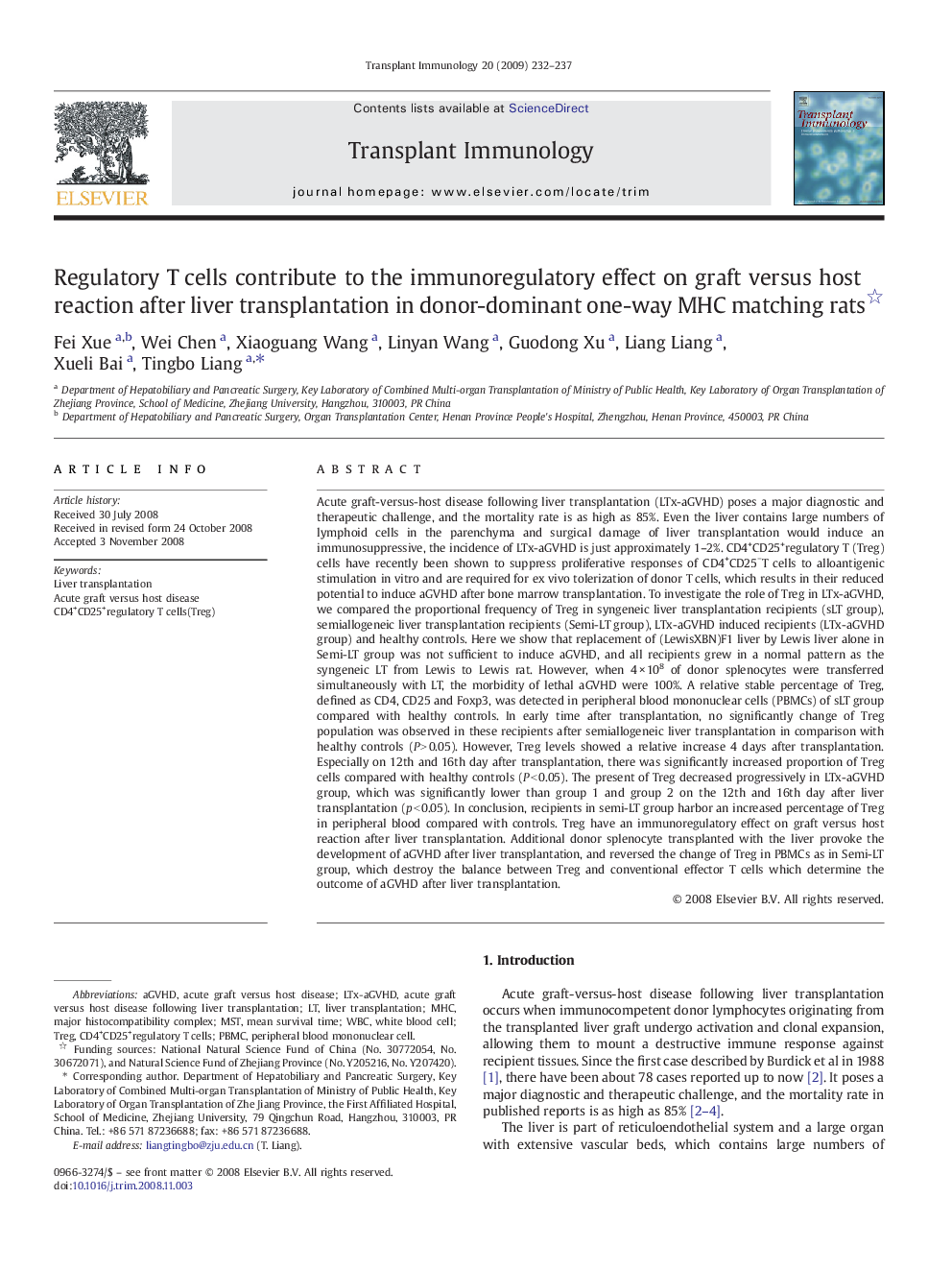| Article ID | Journal | Published Year | Pages | File Type |
|---|---|---|---|---|
| 3392503 | Transplant Immunology | 2009 | 6 Pages |
Acute graft-versus-host disease following liver transplantation (LTx-aGVHD) poses a major diagnostic and therapeutic challenge, and the mortality rate is as high as 85%. Even the liver contains large numbers of lymphoid cells in the parenchyma and surgical damage of liver transplantation would induce an immunosuppressive, the incidence of LTx-aGVHD is just approximately 1–2%. CD4+CD25+regulatory T (Treg) cells have recently been shown to suppress proliferative responses of CD4+CD25−T cells to alloantigenic stimulation in vitro and are required for ex vivo tolerization of donor T cells, which results in their reduced potential to induce aGVHD after bone marrow transplantation. To investigate the role of Treg in LTx-aGVHD, we compared the proportional frequency of Treg in syngeneic liver transplantation recipients (sLT group), semiallogeneic liver transplantation recipients (Semi-LT group), LTx-aGVHD induced recipients (LTx-aGVHD group) and healthy controls. Here we show that replacement of (LewisXBN)F1 liver by Lewis liver alone in Semi-LT group was not sufficient to induce aGVHD, and all recipients grew in a normal pattern as the syngeneic LT from Lewis to Lewis rat. However, when 4 × 108 of donor splenocytes were transferred simultaneously with LT, the morbidity of lethal aGVHD were 100%. A relative stable percentage of Treg, defined as CD4, CD25 and Foxp3, was detected in peripheral blood mononuclear cells (PBMCs) of sLT group compared with healthy controls. In early time after transplantation, no significantly change of Treg population was observed in these recipients after semiallogeneic liver transplantation in comparison with healthy controls (P > 0.05). However, Treg levels showed a relative increase 4 days after transplantation. Especially on 12th and 16th day after transplantation, there was significantly increased proportion of Treg cells compared with healthy controls (P < 0.05). The present of Treg decreased progressively in LTx-aGVHD group, which was significantly lower than group 1 and group 2 on the 12th and 16th day after liver transplantation (p < 0.05). In conclusion, recipients in semi-LT group harbor an increased percentage of Treg in peripheral blood compared with controls. Treg have an immunoregulatory effect on graft versus host reaction after liver transplantation. Additional donor splenocyte transplanted with the liver provoke the development of aGVHD after liver transplantation, and reversed the change of Treg in PBMCs as in Semi-LT group, which destroy the balance between Treg and conventional effector T cells which determine the outcome of aGVHD after liver transplantation.
